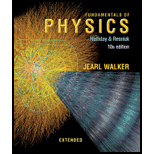
Concept explainers
A standing wave results from the sum of two transverse traveling waves given by
where x, y1 and y2 are in meters and t is in seconds. (a) What is the smallest positive value of x that corresponds to a node? Beginning at t = 0, what is the value of the (b) first, (c) second, and (d) third time the particle at x = 0 has zero velocity?
Want to see the full answer?
Check out a sample textbook solution
Chapter 16 Solutions
Fundamentals of Physics Extended
Additional Science Textbook Solutions
MODERN PHYSICS (LOOSELEAF)
University Physics with Modern Physics (14th Edition)
Essential University Physics: Volume 1 (3rd Edition)
Physics for Scientists and Engineers: A Strategic Approach with Modern Physics (4th Edition)
Matter and Interactions
Physics for Scientists and Engineers with Modern Physics
- A sound wave can be characterized as (a) a transverse wave, (b) a longitudinal wave, (c) a transverse wave or a longitudinal wave, depending on the nature of its source, (d) one that carries no energy, or (e) a wave that does not require a medium to be transmitted from one place to the other.arrow_forwardA taut rope has a mass of 0.180 kg and a length of 3.60 m. What power must be supplied to the rope so as to generate sinusoidal waves having an amplitude of 0.100 m and a wavelength of 0.500 m and traveling with a speed of 30.0 m/s?arrow_forwardThe speed of a transverse wave on a string is 300.00 m/s, its wavelength is 0.50 m, and the amplitude is 20.00 cm. How much time is required for a particle on the string to move through a distance of 5.00 km?arrow_forward
- At t = 0, a transverse pulse in a wire is described by the function y=6.00x2+3.00 where xand y are in meters. If the pulse is traveling in the positive x direction with a speed of 4.50 m/s, write the function y(x, t) that describes this pulse.arrow_forwardA flute has a length of 58.0 cm. If the speed of sound in air is 343 m/s, what is the fundamental frequency of the flute, assuming it is a tube closed at one end and open at the other? (a) 148 Hz (b) 296 Hz (c) 444 Hz (d) 591 Hz (e) none of those answersarrow_forwardA transverse wave on a string has a wavelength of 5.0 m, a period of 0.02 s, and an amplitude of 1.5 cm. The average power transferred by the wave is 5.00 W. What is the tension in the string?arrow_forward
- A string with a mass of 0.30 kg has a length of 4.00 m. If the tension in the string is 50.00 N, and a sinusoidal wave with an amplitude of 2.00 cm is induced on the string, what must the frequency be for an average power of 100.00 W?arrow_forwardWhen a standing wave is set up on a string fixed at both ends, which of the following statements is true? (a) The number of nodes is equal to the number of antinodes. (b) The wavelength is equal to the length of the string divided by an integer. (c) The frequency is equal to the number of nodes times the fundamental frequency. (d) The shape of the string at any instant shows a symmetry about the midpoint of the string.arrow_forwardA person wears a hearing aid that uniformly increases the intensity level of all audible frequencies of sound by 30.0 dB. The hearing aid picks up sound having a frequency of 250 Hz at an intensity of 3.0 1011 W/m2. What is the intensity delivered to the eardrum?arrow_forward
- Two traveling sinusoidal waves are described by the wave functions y1 = 5.00 sin [(4.00x 1 200t)] y2 = 5.00 sin [(4.00x 1 200t 0.250)] where x, y1 and y2 are in meters and t is in seconds. (a) What is the amplitude of the resultant wave function y1 + y2? (b) What is the frequency of the resultant wave function?arrow_forwardA standing wave having three nodes is set up in a string fixed at both ends. If the frequency of the wave is doubled, how many antinodes will there be? (a) 2 (b) 3 (c) 4 (d) 5 (e) 6arrow_forwardThe bulk modulus of water is 2.2 109 Pa (Table 15.2). The density of water is 103 kg/m3 (Table 15.1). Find the speed of sound in water and compare your answer with the value given in Table 17.1.arrow_forward
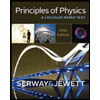 Principles of Physics: A Calculus-Based TextPhysicsISBN:9781133104261Author:Raymond A. Serway, John W. JewettPublisher:Cengage Learning
Principles of Physics: A Calculus-Based TextPhysicsISBN:9781133104261Author:Raymond A. Serway, John W. JewettPublisher:Cengage Learning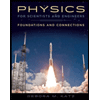 Physics for Scientists and Engineers: Foundations...PhysicsISBN:9781133939146Author:Katz, Debora M.Publisher:Cengage Learning
Physics for Scientists and Engineers: Foundations...PhysicsISBN:9781133939146Author:Katz, Debora M.Publisher:Cengage Learning Physics for Scientists and Engineers, Technology ...PhysicsISBN:9781305116399Author:Raymond A. Serway, John W. JewettPublisher:Cengage Learning
Physics for Scientists and Engineers, Technology ...PhysicsISBN:9781305116399Author:Raymond A. Serway, John W. JewettPublisher:Cengage Learning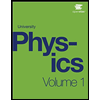 University Physics Volume 1PhysicsISBN:9781938168277Author:William Moebs, Samuel J. Ling, Jeff SannyPublisher:OpenStax - Rice University
University Physics Volume 1PhysicsISBN:9781938168277Author:William Moebs, Samuel J. Ling, Jeff SannyPublisher:OpenStax - Rice University College PhysicsPhysicsISBN:9781305952300Author:Raymond A. Serway, Chris VuillePublisher:Cengage Learning
College PhysicsPhysicsISBN:9781305952300Author:Raymond A. Serway, Chris VuillePublisher:Cengage Learning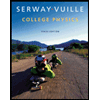 College PhysicsPhysicsISBN:9781285737027Author:Raymond A. Serway, Chris VuillePublisher:Cengage Learning
College PhysicsPhysicsISBN:9781285737027Author:Raymond A. Serway, Chris VuillePublisher:Cengage Learning





